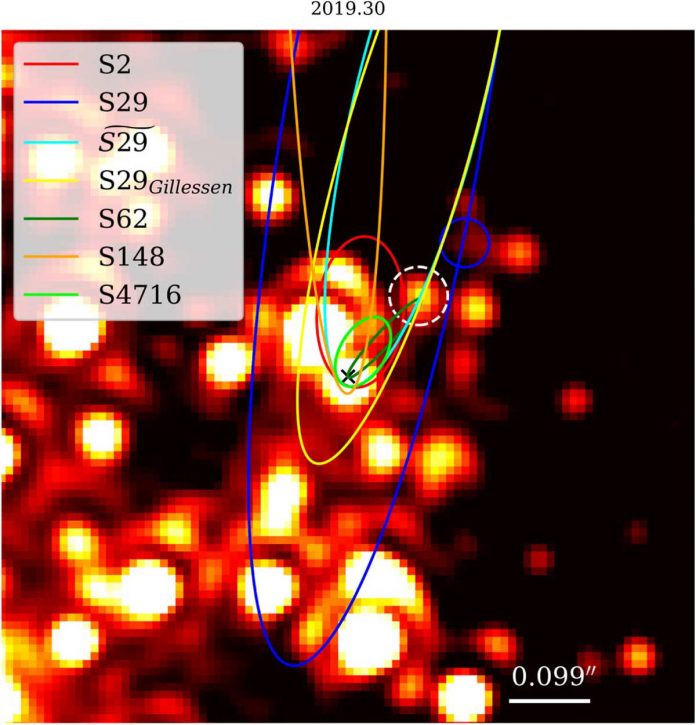The fastest known star, discovered by researchers at the University of Cologne and Masaryk University in Brno (Czech Republic), travels around a black hole in record time. S4716 orbits Sagittarius A*, the black hole at the centre of our Milky Way, in four years at a speed of approximately 8,000 kilometres per second. S4716 is only 100 AU (astronomical unit) away from the black hole, which is a small distance by astronomical standards. One AU equals 149,597,870 kilometres. The research was published in The Astrophysical Journal.
A densely packed cluster of stars exists near the black hole at the centre of our galaxy. This cluster, known as the S cluster, is home to several hundred stars of varying brightness and mass. S stars move extremely quickly. “One prominent member, S2, acts like a large person sitting in front of you in a movie theatre: it blocks your view of what’s important,” said lead author Dr. Florian Peissker. “As a result, S2 frequently obscures the view into the centre of our galaxy. However, we can see the surroundings of the central black hole for brief periods of time.”
The scientist has now identified without a doubt a star that travels around the central supermassive black hole in just four years using continuously refining methods of analysis and observations spanning nearly twenty years. The star was observed by five telescopes, four of which were combined into one large telescope to allow for even more accurate and detailed observations. “It was completely unexpected for a star to be in such a stable orbit so close and fast in the vicinity of a supermassive black hole, and it marks the limit that can be observed with traditional telescopes,” Peissker said.
Furthermore, the discovery sheds new light on the origin and evolution of the orbits of fast-moving stars in the Milky Way’s core. “The short-period, compact orbit of S4716 is quite puzzling,” said Michael Zajaek, an astrophysicist at Masaryk University in Brno who was part of the study. “Near a black hole, stars cannot form as easily. S4716 was forced to move inwards, for example, by approaching other stars and objects in the S cluster, causing its orbit to contract significantly.”

